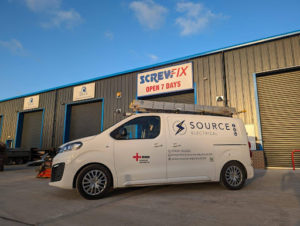Top 8 Money-Saving Habits Every Business Should Adopt:
Running a business today means walking a fine line between growth and rising operational costs. Energy bills, supplier contracts, and maintenance expenses all add up quickly. According to the Federation of Small Businesses (FSB), over 60% of UK SMEs named rising costs as their number-one concern in 2025.
The good news? Businesses that adopt smarter financial habits consistently find ways to cut costs without cutting corners. Below are 8 proven money-saving strategies that apply to companies of any size, with one particularly important habit that involves professional commercial electricians, an often-overlooked area of operational efficiency.

- Conduct Regular Expense Audits
Most businesses have “silent leaks” in their budgets, recurring software subscriptions, unused memberships, outdated insurance policies, or services that no longer deliver value.
Performing a detailed expense audit every quarter helps you identify these unnecessary costs and redirect that money where it matters. Use cloud-based accounting tools like Xero or QuickBooks to spot trends automatically. Deloitte research shows that companies performing regular financial audits can cut overheads by up to 15% per year, simply by eliminating underused or duplicate expenses.
Beyond software, include physical items in your audit: Are you still paying for a printer lease you rarely use? Do you have multiple internet packages across locations that could be consolidated? Spotting these leaks may feel small, but together they add up to thousands per year.
- Upgrade to Energy-Efficient Lighting and Systems
Energy costs are a huge line item for most businesses, and lighting often contributes a surprising share. Many offices and warehouses still rely on fluorescent or halogen lighting, which is both inefficient and expensive to run.
Switching to LED lighting reduces energy consumption by up to 60% and lasts up to 25 times longer than traditional bulbs. Even better, pairing LED installations with motion sensors, smart controls, and updated wiring ensures lights only draw power when needed.
This is where commercial electricians play a key role. A qualified electrician can perform an energy audit, assess outdated wiring that may be wasting power, and install energy-efficient systems that directly reduce your utility bills. This isn’t just an environmental move, it’s a tangible cost-saving habit that pays for itself within a year or two.

- Embrace Preventive Maintenance
Waiting until something breaks is a guaranteed way to spend more than you should. Every piece of business equipment, whether it’s HVAC systems, computers, or electrical panels, has a recommended maintenance schedule. Ignoring it leads to unexpected breakdowns, lost productivity, and emergency repair bills.
Electrical systems, in particular, are prone to hidden wear. Scheduling periodic inspections with a commercial electrician allows businesses to detect problems like overloaded circuits, failing connections, or outdated fuse boards before they escalate. According to Statista, unplanned downtime can cost UK businesses around £8,500 per hour, and that’s before factoring in reputational damage if clients are affected.
Small investments in proactive servicing almost always cost less than urgent repairs. For growing businesses, adopting a “maintenance-first” habit is not just protective; it’s profitable.
- Support Remote or Hybrid Working
Office space is expensive. Beyond rent, there are utilities, cleaning services, parking, and maintenance costs. Shifting part of your workforce to remote or hybrid schedules is one of the simplest ways to save money without reducing productivity.
Research from Global Workplace Analytics found that businesses save around £8,000 per employee per year on overhead costs with remote work. Even if your industry requires some in-office presence, allowing flexible days cuts energy bills and wear on your physical space.
Hybrid working also opens the door to downsizing office space or subleasing unused sections, two moves that can deliver immediate cost reductions.
- Negotiate Supplier and Vendor Contracts
Most businesses fall into the trap of “set and forget” when it comes to vendor agreements. Whether it’s raw materials, office supplies, or delivery services, reviewing contracts annually can uncover huge savings.
You can often unlock discounts through:
- Bulk purchasing agreements
- Longer-term contracts in exchange for better rates
- Comparing multiple vendors to encourage competitive pricing
Make vendor negotiation a standard annual habit. Even small percentage savings compound into thousands over time.

- Automate Routine Business
Processes
Every hour your team spends on repetitive tasks like payroll, invoice processing, or email reminders is an hour that could be focused on growth. Automation tools can take on this workload at a fraction of the cost.
Platforms like Zapier, QuickBooks, and HubSpot can automate routine administrative tasks, freeing employees to work on high-value activities. A McKinsey report found that businesses using automation can cut administrative costs by up to 30%.
The key is to start small. Automate one or two tasks and expand from there, you’ll quickly see labour hours saved translate into real financial benefit.
- Encourage Employee-Led Cost-Saving Ideas
Your employees see the day-to-day operations more closely than any manager or owner. They notice the lights left on, the unused supplies, and the inefficient workflows.
Creating an employee cost-saving initiative, complete with incentives for implemented ideas can dramatically increase efficiency. Harvard Business Review reports that companies that engage employees in cost-saving programs achieve up to 12% higher savings than those relying only on top-down initiatives.
Something as simple as a shared “ideas board” or a quarterly reward for implemented suggestions can turn awareness into action.
- Monitor Key Financial Metrics Monthly
If you only look at your finances at year-end, you’re always reacting rather than proactively adjusting. Monitoring cash flow, profit margins, and ROI on key initiatives every month gives you an early warning system for inefficiency.
This habit also empowers you to measure the impact of every cost-saving step you take, turning small tweaks into a measurable bottom-line improvement.
Cutting business costs isn’t about extreme measures; it’s about consistent habits that add up. From performing quarterly expense audits to using commercial electricians for energy efficiency upgrades, each habit reduces financial waste and strengthens your operational resilience.
Start with one or two changes, track the savings, and reinvest those resources into areas that drive growth. Over time, these habits transform from minor tweaks into a major competitive advantage.
Leave a Reply